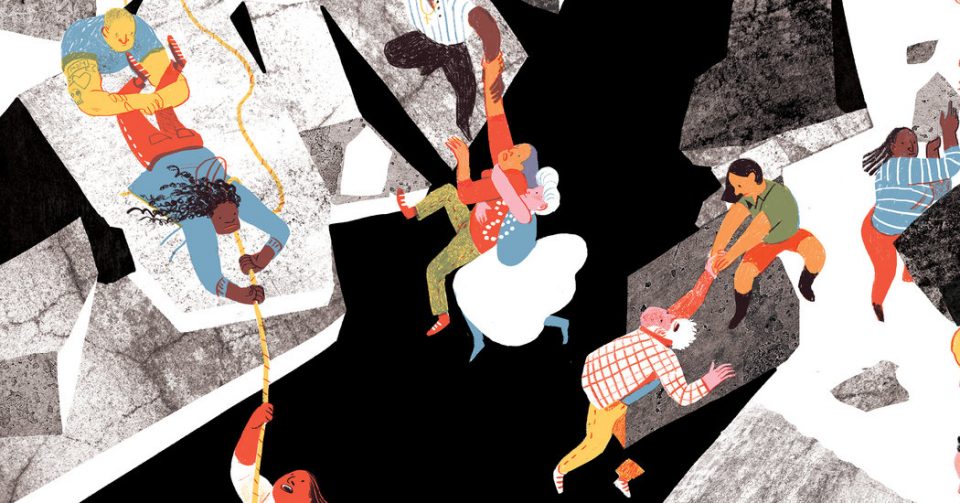Many of our ugliest assumptions about human behavior have been refuted by their observations of how actual humans behave — though we seem tragically slow to shed those old myths. (In some cases, disaster studies teaches us, those in power are so overcome with worry about mass panic and looting that they overreact and clamp down on a public that isn’t actually panicked at all. Disaster scholars refer to this phenomenon as “elite panic.”)
In 1975, 11 years after their work in Alaska, two of the Disaster Research Center’s founders, Russell Dynes and Enrico Quarantelli, speculated about why they continued to find essentially the same scenario repeating itself: why, rather than encouraging conflict or violence, these catastrophes appeared to bring out the best in people.
In ordinary times, they wrote, we suffer alone; any acute experience of our own vulnerability can isolate us, or even make us resentful of others: “The victim often feels discriminated against since there are others who have been spared.” But a disaster affects everyone, and peels us away from “mundane matters” to the “very issue of human life itself.”
When “danger, loss and suffering become a public phenomenon,” they went on, “all those who share in the experience are brought together in a very powerful psychological sense.” An unrelenting immediacy sets in: “Worries about the past and the future are unrealistic when judged against the realities of the moment,” the sociologists wrote, and distinctions between people fall away, leaving only “human beings responding to one another as human beings.”
Thrown all together, in one unrelenting present, we are made to recognize in one another what we deny most vehemently about ourselves: In the end, it’s our vulnerability that connects us.
IV.
I’d never heard of the Great Alaskan Earthquake until I stumbled across an account of it six years ago, even though it is still the most powerful earthquake in American history, and the second-most powerful ever measured in the world. I began gathering up whatever material I could — not only the sociologists’ interview transcripts, but piles of other documents gleamed piecemeal from libraries and individual people’s closets — with an eye toward writing a book that would reconstruct that Easter weekend in Anchorage.
Eventually, I found myself in a cluttered basement in Juneau, confronting 30 or so boxes into which Genie Chance, the Anchorage radio broadcaster, had assiduously packed thousands of letters, photographs, diaries, audio recordings and other material from her life.


